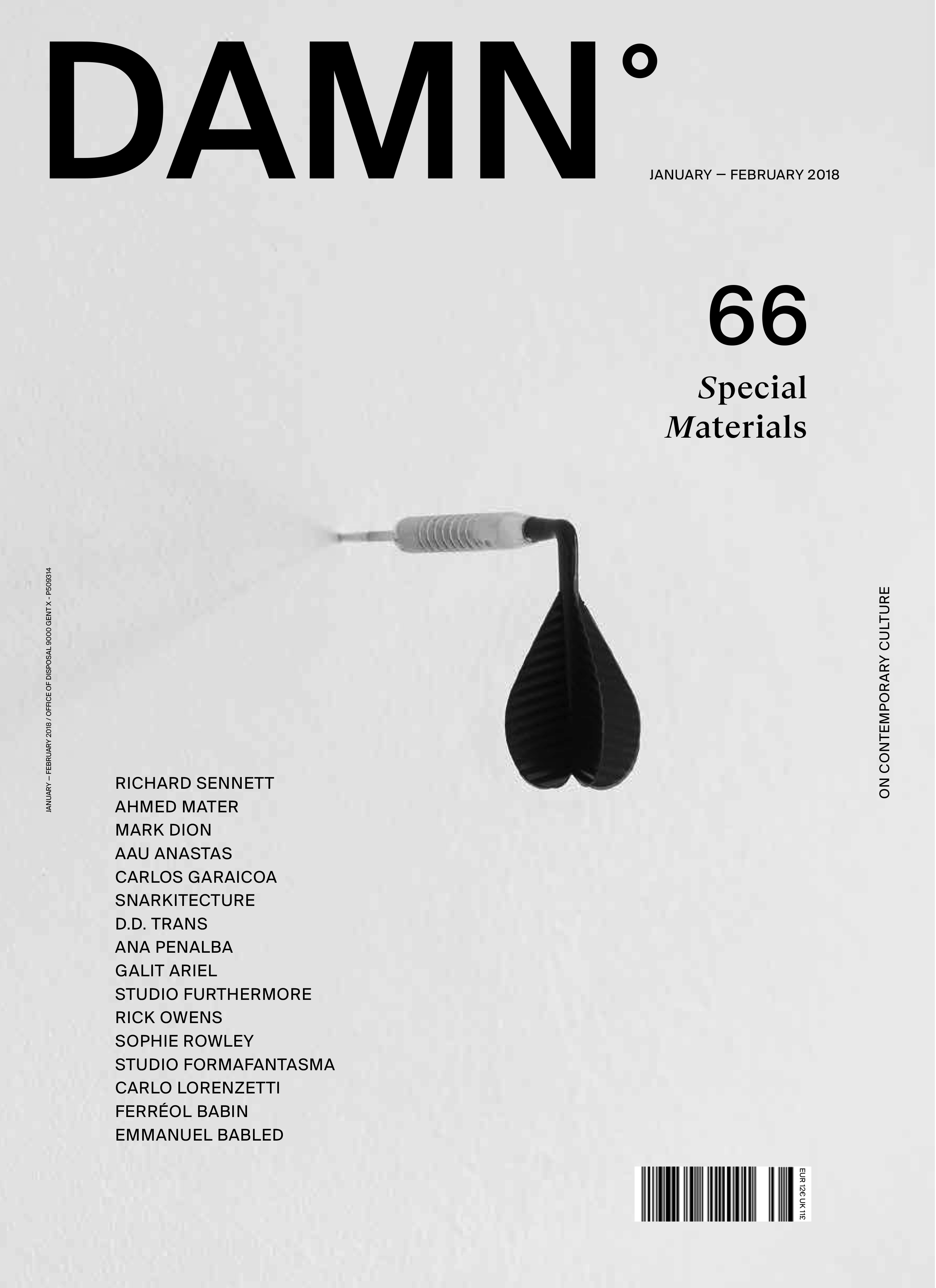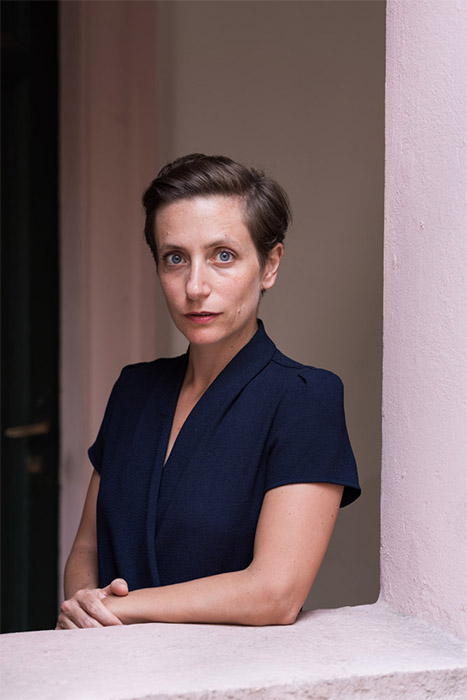When French designer Ferréol Babin talks about his work, he starts by saying that his approach is unusual. First of all, Babin, who is 30 years old and born in Dijon, needs to work alone in his studio. He has no assistants; it is Babin, and only Babin, who must get his hands dirty. He also needs to be surrounded by nature. His contact with the outside world happens through Instagram, not in person. Babin prefers the loneliness of a village on the north-west coast of France, right on the ocean. He describes himself as a complex person, and he feels the need to translate this complexity into his work. As a matter of fact, Babin’s creative life has two aspects. On the one hand as a product designer, he conceives objects for furniture companies, mainly lamps. On the other hand, he produces unique pieces. ‘I cannot be only a designer, and I cannot be only a sculptor,’ Babin explains during a phone conversation. ‘I need both, and my entire production reflects this duality. I like my work to have different layers. I do not want to give all the answers directly - people have to look at the objects and find their own answers.’

An important part of his research concerns experimenting with materials: ‘I love natural materials like clay and wood; materials coming from the earth, with a primitive aspect. I don’t like industrial materials. Shiny plastics, for example, do not fit me.’ Babin’s way of working is also quite traditional, as he reveals, ‘I never use a computer, only mock-ups and sketches. I need to do things with my hands.’ For example, the lamps Magma I and II (2017) are unique pieces handmade in Babin’s workshop. ‘They are brutal, raw, black, and dark,’ says Babin. ‘They are almost like sculptures, but they are still lamps. They are works meant to be exhibited and sold in a gallery.’ The same is true of Coal Soul, Crashed Candy, Chewed and Bark, all from 2017, which are unique pieces that effortlessly flit between sculpture and objects. Although for Babin, the category labels are a misnomer: ‘When I make unique pieces, I don’t care if it is more a sculpture or an object.’

The approach is very different when Babin designs objects that are intended for production. ‘My best selling piece is probably Lunaire, produced by FontanaArte. It is a very simple product, made for big spaces, like hotels, so it has to be functional and it cannot be too sculptural. I am also interested in these kinds of products,’ says Babin. This was the starting point of Babin’s career. In fact, he realised Lunaire as a student. It was his graduation project, which FontanaArte discovered, and decided to produce. ‘Designing light is very important to me. My background, in fact, is in architecture and interior design. At the beginning I wanted to work with space, but then I realised that it was too big for me, I had to scale down. I wanted to work with my hands, so I moved from space to the object, but I needed to find a link between them, and that was light, which spreads in the space but comes from an object. Lunaire is very simple, and everybody understands how it functions, but it has a surprising effect, as a slight movement totally changes the light. My work is always about this kind of effect, also when I work on unique pieces. Then I look for the surprise element in the material.’

Babin has succeeded in reconciling the two sides of his creative spirit in three of his latest objects: a box called Building; the Lake dish; and a vase called Mountain, all in ceramics. ‘Thanks to the German company pulpo, I was able to realise some objects that started as sculptures, using raw material, and then, through the collaboration with this company, move to production (the three pieces are part of pulpo's Fabulously Awesome Tablescape collection). It is a totally new thing for me: it allows me to work as an artist, not being in front of a computer, but manipulating the material with my hands in my workshop, and still, they are able to produce it. Then the product can be sold for the price of a design object and not of a unique sculpture. I like this, and I would like to develop this kind of approach.’


Lunaire, 2013. Produced by FontanaArte
An important part of his research concerns experimenting with materials: ‘I love natural materials like clay and wood; materials coming from the earth, with a primitive aspect. I don’t like industrial materials. Shiny plastics, for example, do not fit me.’ Babin’s way of working is also quite traditional, as he reveals, ‘I never use a computer, only mock-ups and sketches. I need to do things with my hands.’ For example, the lamps Magma I and II (2017) are unique pieces handmade in Babin’s workshop. ‘They are brutal, raw, black, and dark,’ says Babin. ‘They are almost like sculptures, but they are still lamps. They are works meant to be exhibited and sold in a gallery.’ The same is true of Coal Soul, Crashed Candy, Chewed and Bark, all from 2017, which are unique pieces that effortlessly flit between sculpture and objects. Although for Babin, the category labels are a misnomer: ‘When I make unique pieces, I don’t care if it is more a sculpture or an object.’

Left: Magma I, Unique piece. Right: Crushed Candy, 2017 Unique piece
The approach is very different when Babin designs objects that are intended for production. ‘My best selling piece is probably Lunaire, produced by FontanaArte. It is a very simple product, made for big spaces, like hotels, so it has to be functional and it cannot be too sculptural. I am also interested in these kinds of products,’ says Babin. This was the starting point of Babin’s career. In fact, he realised Lunaire as a student. It was his graduation project, which FontanaArte discovered, and decided to produce. ‘Designing light is very important to me. My background, in fact, is in architecture and interior design. At the beginning I wanted to work with space, but then I realised that it was too big for me, I had to scale down. I wanted to work with my hands, so I moved from space to the object, but I needed to find a link between them, and that was light, which spreads in the space but comes from an object. Lunaire is very simple, and everybody understands how it functions, but it has a surprising effect, as a slight movement totally changes the light. My work is always about this kind of effect, also when I work on unique pieces. Then I look for the surprise element in the material.’

Left: Lake, 2017, Produced by pulpo. Right: Écume, 2013, Unique pieces



